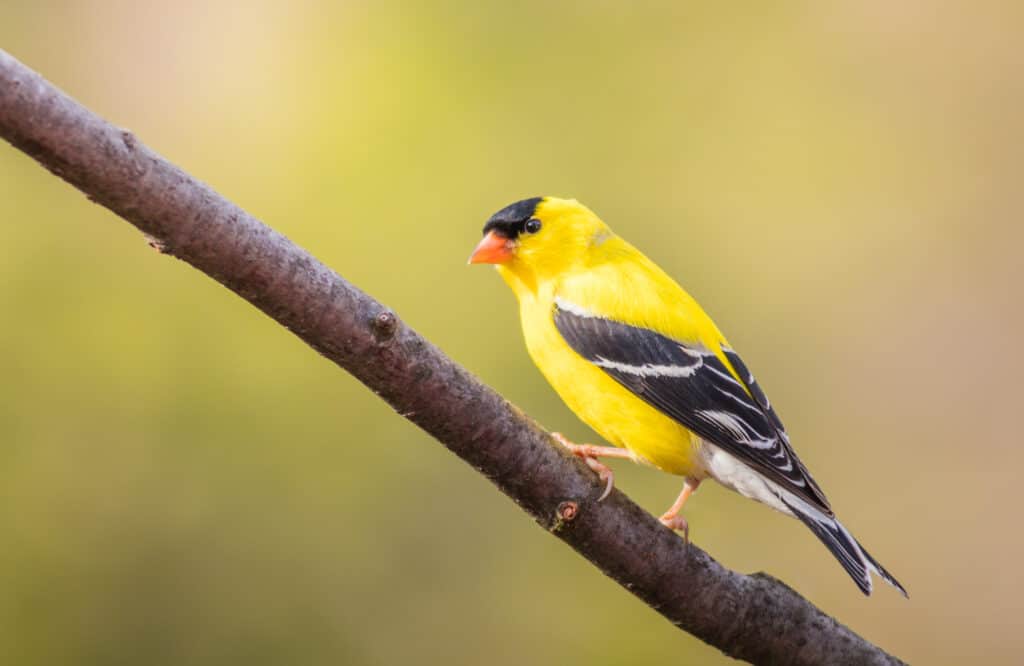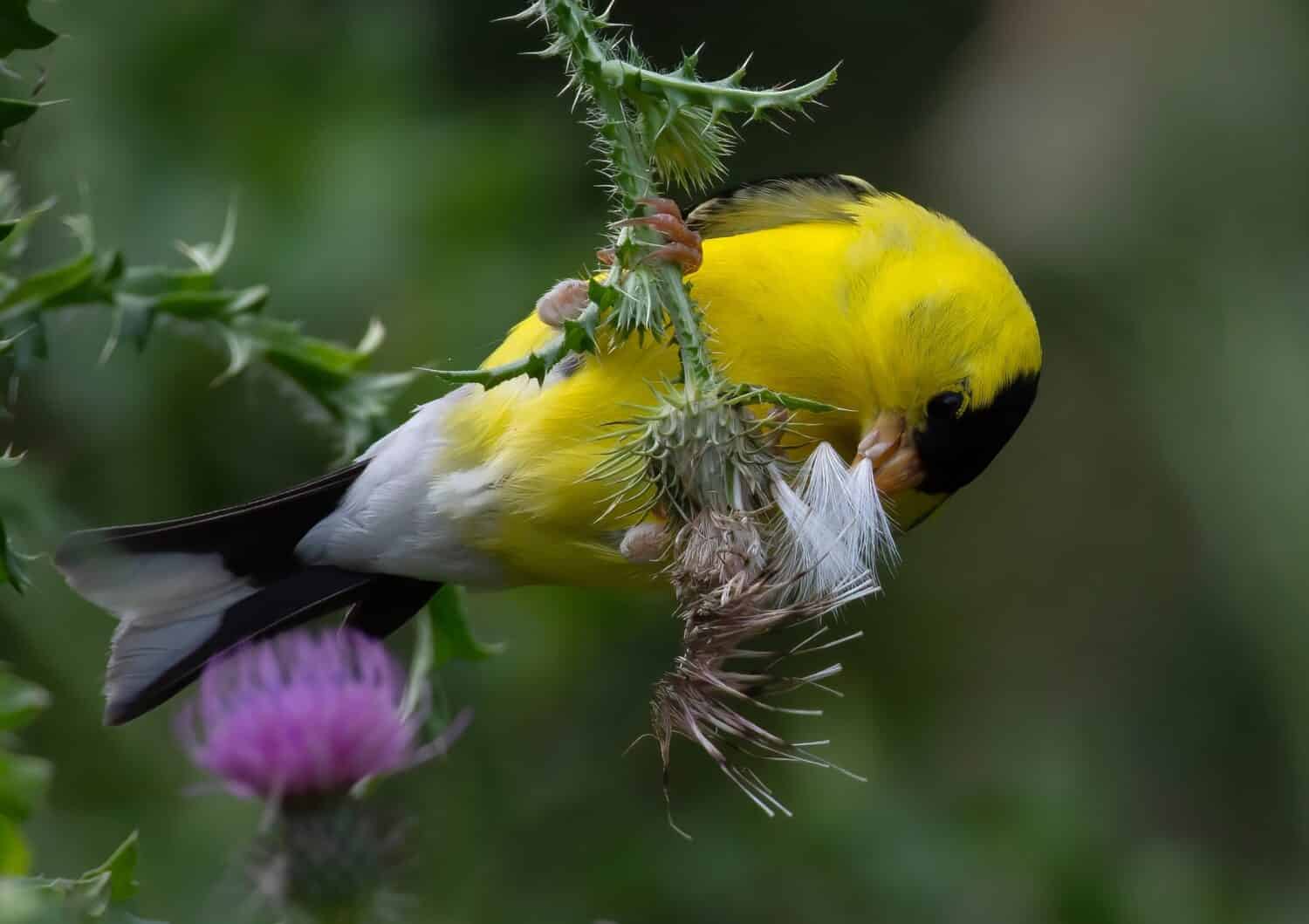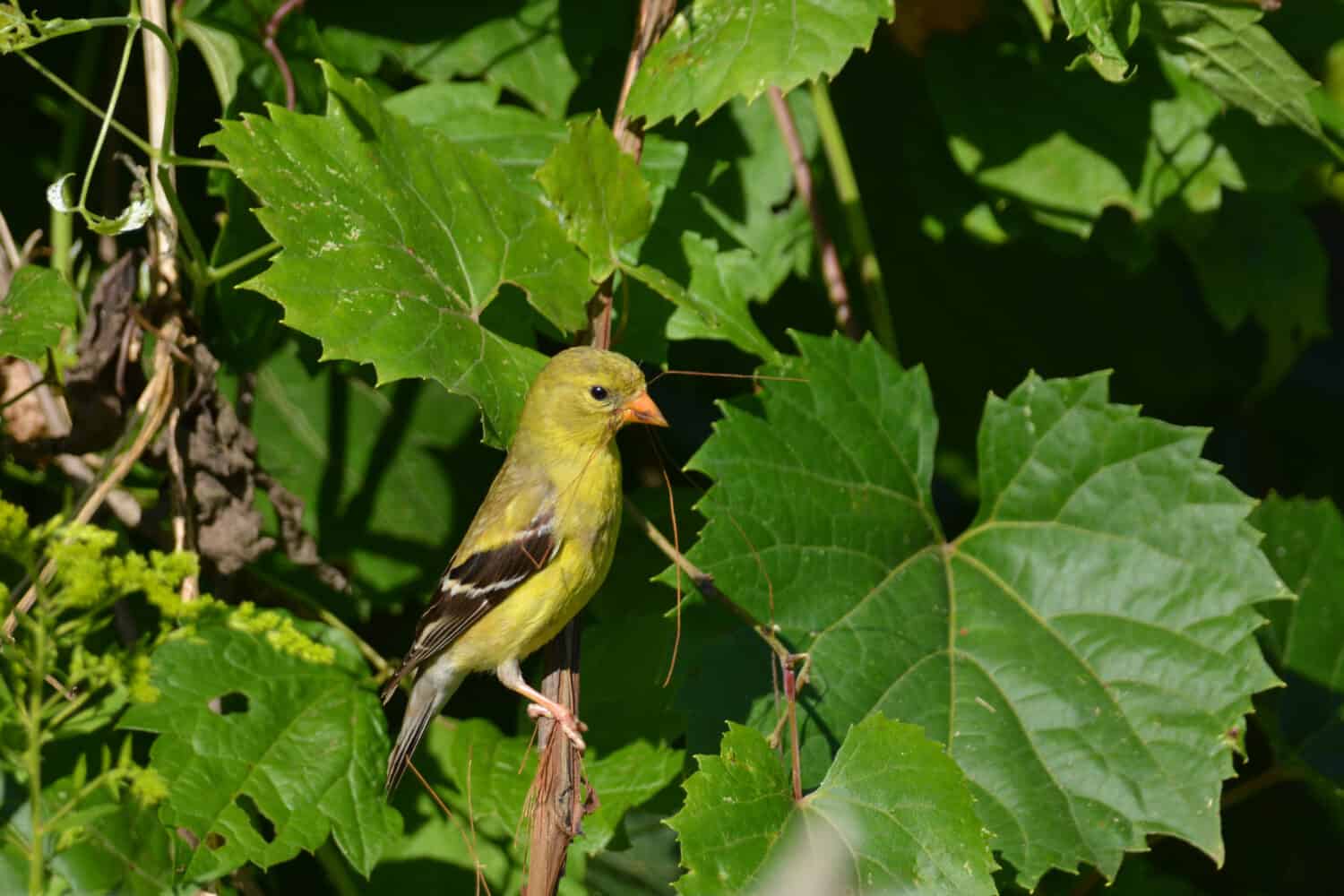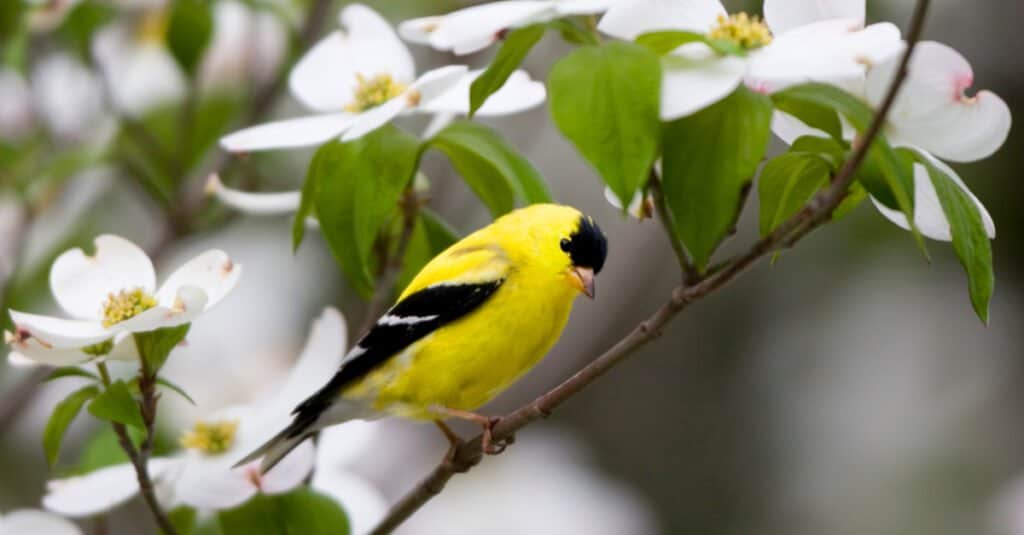The official Washington State Bird is the Willow Goldfinch (Spinus tristis salicamans). The Willow Goldfinch is a subspecies of the American Goldfinch (Spinus tristis). Washington is the only state that has chosen the Willow Goldfinch as its state bird, but two other states adopted the Eastern Goldfinch (Spinus tristis tristis), another subspecies of the American Goldfinch as their state birds. Iowa chose the Eastern Goldfinch in 1933, and New Jersey adopted the same bird in 1935.
The Willow Goldfinch was not the state of Washington’s first State Bird. That honor went to the Western Meadowlark, chosen by schoolchildren across the state in 1928. But several other states also chose the same bird, so the Washington Federation of Women’s Clubs held another vote in 1931. Although the Willow Goldfinch won over several other birds. However, neither the Western Meadowlark nor the Willow Goldfinch were formally adopted by the legislature, so Washington had two unofficial state birds for quite some time. The legislature made the Willow Goldfinch the official Washington State Bird 20 years later on March 19, 1951.

Where Does the State Bird of Washington Live?

The American Goldfinch has a vast range covering much of North America.
©Rabbitti/Shutterstock.com
American Goldfinches range throughout the United States, southern Canada, and northern Mexico. The Willow Goldfinch subspecies, native to the Pacific coastal region, is a permanent resident throughout most of the state of Washington. Its breeding range extends north, including the remainder of the state and into Canada.
The Willow Goldfinch can find suitable habitat all around Washington. They live in forests, shrublands, meadows and grasslands. This small bird spends time flocking in trees and bushes. It flies over open fields gathering seeds and sits on perches along roadsides and fencerows. People often spot Willow Goldfinches in groups and note that the birds frequently spend time at backyard feeders or in gardens and orchards.
Diet

American Goldfinches love to eat the seeds of weeds, grasses, flowers, and trees.
©gary powell/Shutterstock.com
American Goldfinches are almost exclusively granivorous. They eat mostly seeds from weeds and grasses, along with berries, buds, and sap. They love seeds from wild plants such as thistle, ragweed, milkweed, dandelion, and many others. They also favor the seeds of trees such as birch and alder, as well as those of common garden flowers such as zinnias, sunflowers, and coneflowers. These birds only very occasionally eat insects, usually when they get in the way of delicious seeds. American Goldfinches feed their hatchlings and nestlings a diet of mostly regurgitated seeds, along with insect parts if they have recently swallowed any.
Where Does the State Bird of Washington Nest?

Female American Goldfinches build nests in shrubs, trees, or even dense patches of weeds.
©C. Hamilton/Shutterstock.com
The American Goldfinch typically mates for a single season. Males begin their courtship later than most birds, around the middle to late summer. They wait until seeds from weeds and other plants become plentiful. Once they find a mate, the female builds a cup-shaped nest in a tree or shrub, or even within dense weeds, usually less than 30 feet above the ground. The male defends the territory while the female builds the nest from soft fibers like thistle down, spider webs, and stronger plant fibers and strips of bark.
American Goldfinch Eggs
Pairs of American Goldfinches typically raise a single clutch consisting of four to six eggs. The female lays light blue eggs which she incubates on her own for 12 to 14 days. The male feeds the female during this time. American Goldfinch chicks are altricial, meaning they are born naked and helpless with their eyes closed. They develop quickly, fed a diet of almost exclusively seeds by both parents. They fledge when they are between 11 to 17 days old.
Brown-headed Cowbirds sometimes parasitize the nests of American Goldfinches by laying their eggs in their nests. The Brown-headed Cowbird chicks rarely survive, though, because they cannot tolerate the seed-based diet the American Goldfinches feed their chicks.
What Do Willow Goldfinches Look Like?

American Goldfinches exhibit more significant sexual dimorphism in the summer than the winter.
©Tony Campbell/Shutterstock.com
The State Bird of Washington is bright, colorful, and easy to spot. Willow Goldfinches, like other American Goldfinches, are sexually dimorphic. In the summer, following the spring molt, males have bright, lemony yellow feathers on their back and breast. They have a shiny black cap that is smaller than other American Goldfinch subspecies. They also have black wings and tail with white markings and a white rump. American Goldfinches have a small, conical bill, like most other finch varieties. It is pinkish most of the year, but orange after the spring molt. After the autumn molt, males turn more of a dull, grayish yellow, resembling the females of the species. Females have more subdued yellow plumage all year, and their wings and tail have a dark brown color rather than black.
These beautiful little songbirds reach lengths of around 4.3 to 5.5 inches. Their weight averages only around 0.5 ounces. They are light enough they can easily use their strong feet to hang from seed heads to feed.
Is the State Bird of Washington Rare?

American Goldfinches have a population that is increasing.
©Danita Delimont/Shutterstock.com
The American Goldfinch has a flourishing population throughout its range, from southern Canada through the United States, and much of northern Mexico. The range of this species is vast, and these birds can utilize lots of different habitats throughout. The American Goldfinch lives as a permanent resident throughout much of its distribution and migrates through the rest. The IUCN Red List of Threatened Species lists the American Goldfinch as a species of least concern with a population that is increasing. The Willow Goldfinch subspecies seems to be doing just as well, given that it is highly adapted to its environment. Deforestation and other habitat disruptions that may adversely affect other species do not bother the weed-loving Willow Goldfinch at all. In short, the State Bird of Washington is neither rare nor threatened within its home range.
The photo featured at the top of this post is © Rejean Bedard/iStock via Getty Images
Thank you for reading! Have some feedback for us? Contact the AZ Animals editorial team.







